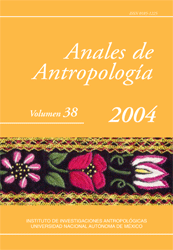The lakabed hypothesis in Oaxaca' s archeology: a reappraisal of the central valley ecosystem
Main Article Content
Abstract
The geomorphology of Oaxaca’s Central Valleys has been the cause of long discussions about the conditions under which Prehispanic Zapotec people developed. Oral tradition often alludes to lakes and their importance for everyday life, while alluvial structures along the rivers favour the streambed hypothesis. The river system in itself, however, does not explain the valley’s general morphology and its formation processes. Only a comprehensive view of Oaxaca’s midlands, linked to the effects of recent tectonic movements and vulcanism, may shed some light on this situation and illustrate the environment in which the old city of Monte Alban was founded. Through an analysis of the region’s cartography it is possible to conclude that both arguments are valid if placed within a broad temporal perspective. Moreover, it becomes clear that the archaeological record has been interpreted in terms of modern perception, and not in the way ancient people looked at their geographical setting.
Downloads
Download data is not yet available.
Article Details
How to Cite
Fahmel Beyer, B. (2010). The lakabed hypothesis in Oaxaca’ s archeology: a reappraisal of the central valley ecosystem. Annals of Anthropology, 38(1). https://doi.org/10.22201/iia.24486221e.2004.1.16541
Citas en Dimensions Service
Esta revista usa una licencia CC del tipo CC BY-NC-ND 3.0. Se maneja bajo el esquema de acceso abierto, con una licencia Creative Commons Attribution-NonCommercial-NoDerivs 3.0 Unported.
